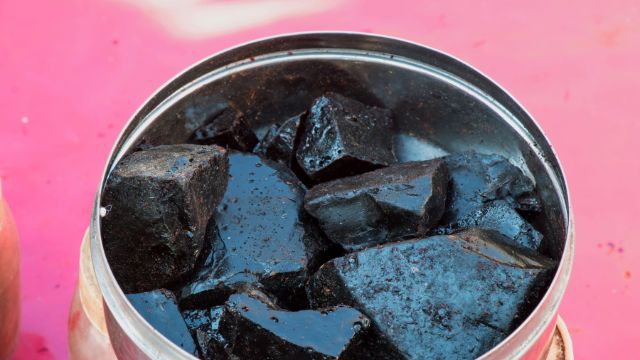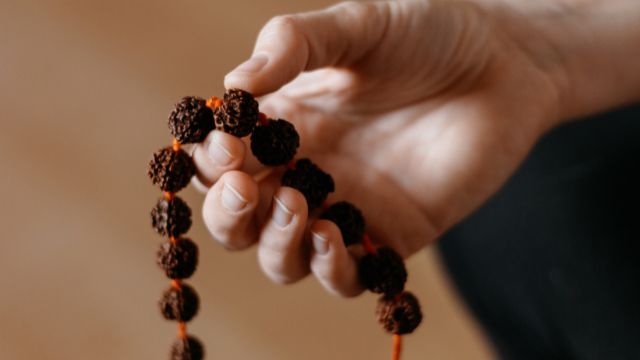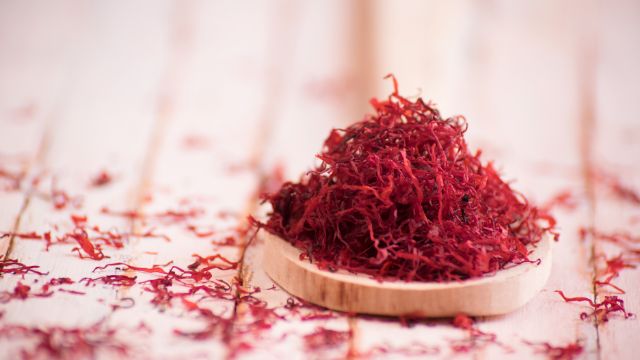Shilajit is a naturally occurring resin-like material that can be found in hilly areas like the Himalayas. For its alleged health advantages, it has been utilized for millennia in conventional medical systems like Ayurveda. saffron, Château Petrus ’82 and 100-year balsamic vinegar, the most expensive wine in the world, are all rarer and more expensive. There are different classes of this herbal-mineral material, with the top grade (Gold Grade) being the rarest of them.
The majority of counterfeit Shilajit is sold as a tincture (liquid) or powder (sometimes in capsule form). However, the resin form has also been widely duplicated in recent years. To create fulvic acid, a crucial active ingredient in Shilajit, coal, fertilizers, and charcoal are just a few of the inventive ways phoney items are made. Other questionable companies only mix inactive substances and occasionally other herbs together. Shilajit’s quality and purity might, however, differ, therefore it’s crucial to understand how to verify the purity of the shilajit you buy.
Guide To Identify the original Shilajit

Following are some pointers for checking the purity of Shilajit:
1. Source and Vendor: Start by doing some research on the manufacturer and supplier of your shilajit. Shilajit of the highest calibre is often gathered in pristine mountain ranges like the Himalayas. Make sure the sourcing process is open and honest with your supplier.
2. Appearance and Texture: A slick, glossy surface and a resin-like look are characteristics of pure shilajit. It can be anything from a deep brown to a black colour. When warmed in your hands, it ought to become sticky and easily malleable. It might not be pure if it is too crumbly or hard.
3. Pliability: Melts in your palms, becoming sticky and goopy. Alternatively, if you cool it by putting it in the refrigerator, it will harden considerably and shatter like glass when hit with a hammer. When you try it, make sure to put it in a plastic bag to prevent spills and loss of your priceless supplement. Pure Shilajit will never bunch up or lose its shape.
4. Solubility in Water: Shilajit is well recognized for dissolving in water to produce a dark or brownish solution. Stir a small amount of shilajit into a glass of water to check the product’s quality. It is an indication of purity if it dissolves totally. Adulterants or impurities may prevent appropriate dissolution.
5. Taste and Smell: Shilajit in its purest form has an earthy, bitter flavour and a potent, pungent scent. Your shilajit might not be authentic if it lacks these qualities or has an odd or disagreeable flavour or scent.
6. Residue: Pure shilajit ought to leave little to no residue at the bottom of the glass after being dissolved in water. It’s a warning indicator if you see a lot of dirt or contaminants settle.
7. Lab Testing: Laboratory testing is the most dependable method for determining the purity of shilajit. Reputable vendors frequently include lab reports that describe the makeup of their goods, including the minerals present and the lack of pollutants. When purchasing, consider these reports.
8. Certifications: Look for certifications from reputable organisations or organizations, like organic certifications or quality assurance labels, on the Shilajit product you’re interested in purchasing. These certificates might offer a purity guarantee.
9. Price and packaging: While cost alone is not a guarantee of purity, shilajit products that are priced very low are more likely to include adulterants. Pay attention to the packing as well. To maintain the purity of quality shilajit, it is frequently marketed in glass or BPA-free plastic containers.
10. Consult an Expert: Consult with an Ayurvedic physician or an herbalist if you’re unsure about the purity of the shilajit you’ve bought. They can offer advice and even judge the quality based on their previous experiences.
11. Smoothness and Texture: Shilajit ought to be sticky and malleable at room temperature, thus check the consistency and texture. When handled, pure shilajit should readily congeal into a sticky, mushy mass.
12. Sound When Tapped: Pure shilajit ought to produce a crisp, ringing sound when lightly tapped with a spoon or your finger. This may serve as yet another sign of its calibre.
13. Microbial Testing: To make sure the product is free of hazardous bacteria and pathogens, find out if it has undergone microbiological testing. Laboratory results should attest to the lack of pollutants.
14. Mineral Content: Shilajit of high calibre is abundant in necessary minerals. Review the product’s mineral content to make sure it matches the predicted mineral profile of shilajit, as stated in the lab reports.
15. Packaging Transparency: Check the packaging of the product for clarity. Reputable vendors frequently include details regarding the product’s extraction method, source, and any quality certifications right on the label.
16. Storage Recommendations: On the box, look for the suggested storage conditions. To preserve its quality, pure shilajit should be kept out of direct sunlight in a cool, dry location.
17. Customer Reviews and Ratings: Read reviews and ratings from customers for the Shilajit product you’re thinking about purchasing. Real user experiences can shed light on the efficacy and purity of the product.
18. Origin Documentation: Some providers offer proof that links the shilajit in their products to a specific spot in the highlands. The authenticity of the goods may gain credibility as a result.
19. Batch Number and Expiry Date: Check to see if the product has a batch number and an expiration date. You can monitor the product’s legitimacy and freshness using this information.
20. Consult an Ayurvedic Practitioner: If at all feasible, speak with an Ayurvedic doctor or herbalist who can advise you on the purity of shilajit based on your health requirements and worries.
Conclusion
Shilajit is a strong substance, and its quality can have a big impact on how effective it is. You may more easily be sure that you are buying high-quality and pure shilajit for your health and wellness needs by adhering to these recommendations and utilizing your senses to evaluate its look, taste, smell, and solubility.
| Related Topics |
| How To Identify Darbha Grass |
| How To Identify Original Kasturi Manjal |
| How To Identify Shami Plant |
| How To Identify Original Shakha Pola |

Santosh Kumar is an editor at unfoldstuffs.com and a professional content writer. With years of experience he is passionate for creating engaging, informative and impactful topics.








